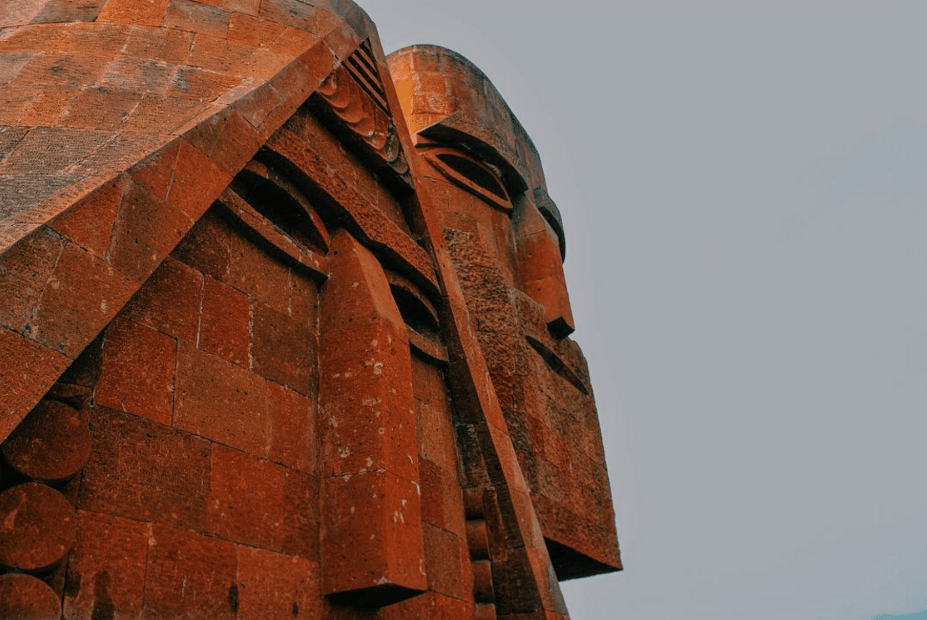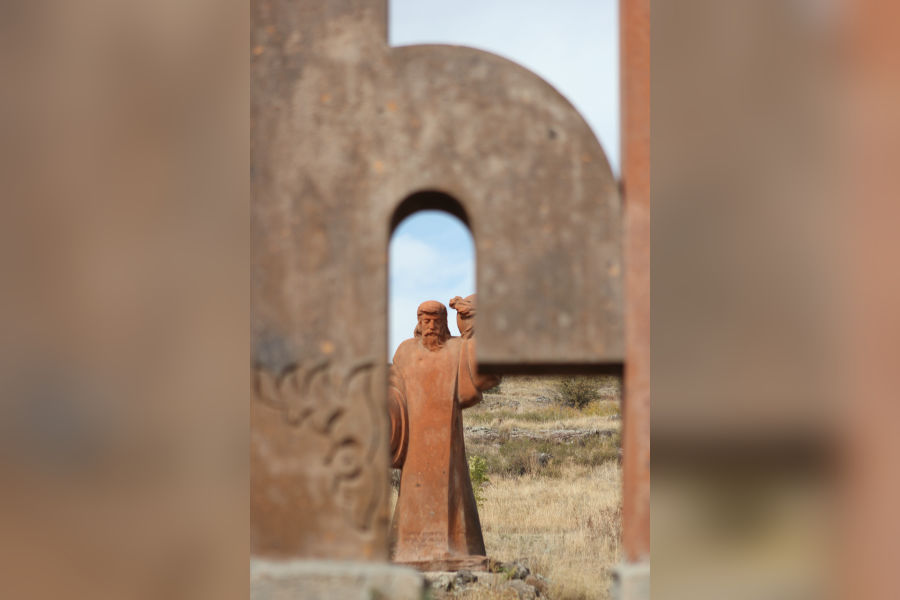Scenarios for the Future of Nagorno Karabakh

In late May 2022, Armenia and Azerbaijan established national commissions for border delimitation and demarcation. The two countries are close to signing a deal on the restoration of communications and will soon launch negotiations on elaborating a bilateral agreement. Currently, experts and societies wonder what these developments mean for the future of the self-proclaimed Nagorno Karabakh Republic. Discussions are underway, and different ideas have been put forward. Some Azerbaijani experts started to circulate the possibility of autonomy for Nagorno Karabakh, hinting that Azerbaijan may change its post-2020 war rhetoric, denying the existence of Nagorno Karabakh and claiming that the issue of status was thrown into the dustbin of history. There is a lack of details on what this autonomy could be. However, Azerbaijani publications point to the necessity to guarantee the cultural and language rights of the Armenians, mentioning the Aland Islands as a possible solution to replicate. The Armenian government speaks about unspecified suggestions from the “international community” to lower the bar for the status of Nagorno Karabakh, simultaneously arguing that the critical issue is the rights and security of Armenians, and the status should derive from that. No specific mention of what type of rights should be protected, by whom, and what may happen if Azerbaijan changes its mind after the potential deal. The authorities of Nagorno Karabakh reject any possibility of being part of Azerbaijan under any guarantees and argue that the only possible solution is the international recognition of the Nagorno Karabakh Republic’s independence.
Meanwhile, the war in Ukraine has completely ruined Russia-West relations, making Ukraine a battlefield of a proxy war between Russia and the US. There are concerns that the Nagorno Karabakh conflict may be transformed into another area of Russia-West geopolitical confrontation, ending the 25 years of cooperation between Russia, the US and France on this issue. The presence of Russian peacekeepers in Nagorno Karabakh, which increases Russian positions in the South Caucasus, and the US desire to weaken and eventually push Russia out from the post-Soviet space does not bode well for Nagorno Karabakh.
the future of Nagorno Karabakh remains foggy
Given all these uncertainties, the future of Nagorno Karabakh remains foggy. However, closer examination of current trends allows for identifying several scenarios for the immediate future.

Scenario 1: De jure Azerbaijan, de facto Russia
The post-2020 war status quo remains in place while demographics gradually shift in favor of Azerbaijan. The likelihood of a new war after 2030 remains high.
In this scenario, Armenia and Azerbaijan will sign a deal on the restoration of communications and start the process of border delimitation and demarcation but fail to reach an agreement on the status of Nagorno Karabakh. Given the absence of a deal, Russia will claim that Russian peacekeepers should stay in Nagorno Karabakh after November 2025 to prevent the resumption of hostilities. Armenia and Nagorno Karabakh will agree on this. Azerbaijan will have two choices: to agree on the extension of the Russian peacekeepers’ mandate or demand their withdrawal. The latter will automatically put Azerbaijan against Russia and create significant bilateral tensions. Given the cautious policy of President Aliyev, it is unlikely that he will choose the path of confrontation with Russia.
Meanwhile, Azerbaijan may demand concessions from Russia for its consent to extend the Russian peacekeepers’ mandate. Probably Azerbaijan would like to regulate the presence of Russian troops through a bilateral Russia-Azerbaijan agreement, thus kicking Armenia out of the process. In this scenario, the future of Nagorno Karabakh will remain in limbo until at least 2030. Azerbaijan will use this period to increase the number of Azerbaijanis in the territory of the former Nagorno Karabakh Autonomous Oblast (there are plans to bring 25-27,000 Azerbaijanis into Shushi and around 30,000 into the Hadrut region by 2030). From the Azerbaijani perspective, the growing numbers of Azerbaijanis and the decline of the Armenian population due to security reasons and an uncertain future will ultimately solve the Karabakh conflict in favor of Azerbaijan, even if Russian troops remain in Karabakh beyond 2030.
Meanwhile, the shifting demographics in Nagorno Karabakh will force Armenians to react to secure at least the post-2020 war borders. They may organize a referendum to join either Armenia or Russia, while Russians may distribute Russian passports to cement their influence. This scenario will guarantee relative security in the short to midterm period (seven to 10 years), but the long-term perspective will remain volatile.
Scenario 2: Quick death of Artsakh
In this scenario, Russian troops leave Nagorno Karabakh due to a Russian defeat in Ukraine and domestic upheaval. Armenia is unable to defend the post-2020 war borders of Nagorno Karabakh. No other country (the US, UK, Germany, France, etc.) will deploy troops in Nagorno Karabakh against the will of Azerbaijan. As a gesture towards the international community, Baku may offer Nagorno Karabakh a light version of cultural autonomy, simultaneously claiming that the Azerbaijani population should enter Stepanakert to live there. It will reject the deployment of any international peacekeeping force. Few, if any, Armenians in Nagorno Karabakh will agree to live under the control of Azerbaijan. They will leave for Armenia, while Azerbaijan will reject the notion of ethnic cleansing, arguing that it provides all guarantees for the Armenian minority. If they prefer to leave, it is their choice. The international community (the US, EU, Council of Europe) may deplore these developments and express its concerns, but their statements will not make any changes on the ground. The weakening of Russia will trigger tectonic shifts in the security architecture of Eurasia. Amidst that turmoil, the fate of 100,000 Armenians will not remain the world’s top priority for an extended period.
Scenario 3: A deal between Armenia and Azerbaijan
As of now, this scenario seems quite unlikely, given the differences between perceptions of the sides. However, this scenario cannot be excluded completely and has two sub-scenarios.
The first is to fix a transitional period for Nagorno Karabakh in the Armenia-Azerbaijan treaty. Specific criteria should be elaborated for the duration of that transition period, and the final decision of the International Court of Justice on the Application of the International Convention on the Elimination of All Forms of Racial Discrimination should be one of them. Simultaneously, intensive confidence-building measures should be applied during this period. They may include establishing a free economic zone in Nagorno Karabakh and launching small-scale community-level economic projects benefiting both Armenians and Azerbaijanis. The post-2020 war status quo should be kept during the transitional period. The possibility of supplementing Russian peacekeepers with international military observers with a UN Security Council mandate, similar to the UN Observer Mission in Georgia (UNOMIG), may be explored.
The second sub-scenario is to find a permanent solution regarding the status of Nagorno Karabakh. Neither cultural autonomy nor a projection of the Aland Islands experience will work here. The possible option could be to apply the idea of “shared sovereignty” in Nagorno Karabakh. It will provide Armenia the right to be a guarantor of the security of the Armenian population of Nagorno Karabakh. At the same time, Azerbaijan will have the right to guarantee the security of the Azerbaijani population, simultaneously keeping the international foreign presence there for a while. Armenians and Azerbaijanis of Nagorno Karabakh should have the right to receive either Armenian or Azerbaijani citizenship, while the option of dual citizenship should also be allowed. Establishing a free economic zone and the simultaneous circulation of Armenian drams and Azerbaijani manats in Nagorno Karabakh may foster economic cooperation and reduce tensions. In this scenario, ultimately, Nagorno Karabakh may be transformed into a special administrative region jointly governed by Armenia and Azerbaijan. At the same time, the international community may support the development of institutional capacities of the region. The EU experience of civilian missions under the Common Security and Defense Policy (CSDP) can be helpful.
Given the current trends in international and regional developments, the first scenario seems the most likely, while the third scenario remains a distant possibility.










None of those scenarios are viable. The 150,000 Artsakhians know better than anyone that to live under ANY form of control by the Sunni Azerbaijanis is totally impossible for them, as it would lead to their painful ejection from Nagorno Karabakh. Many would be killed by the intolerant dictator Aliyev and his people.There were 300,000 Armenians in Azerbaijan 4o years ago, today there are none. There was an Armenian majority in Nachiavan 50 years ago, now there are none. If the province was ‘ put ‘ under Azeri control, they would then demand Syunik, the sparsely populated southernmost Armenian province. And on it would go.
Hello Dr Boghossian
Unfortunately war is not that far and the russo armenian confrontation is inevitable even before the armeno turkish one. Russia sacrificed armenia for a good few billions of dollars. Putin the pig will die and aliyev will be replaced at some point by another aliyev. War can start any moment after 2025, it will be more deadly and more bloody. It will depend on the naive leaders of armenia whether they can prepare for it and recruit professionals or like the previous cronies claim that they are invincible. Pashinoghlu has promptly alienated the diaspora to the extent that we don’t believe in anything that he says. On the other hand, we have to blatantly and loudly admit that Russia is our number one enemy, always has been and always will be. For the last 100 years they have sold our territory with our sacrifices. Had it not been for Karekin Njteh we could have lost Syunik by now as well. So please stop dancing in front of the Russian embassy and wake up.
It’s Shia actually, not Sunni)
1st scenario seems more likely out of those 3.
I think Russian PK will definitely stay at least until 2030(even 2035). I totally agree on Azeri concessions from Russia.
regarding the new war: We should define how the new war will occur, who will be the sides, in which territory the war will be ongoing? Today, September 2022, Lachin and other villages are already under azerbaijani control, meaning Nagorno Karabakh is totally encircled. It means totally new map for war.
Finally, I don’t think this problem can be solved until next generation.